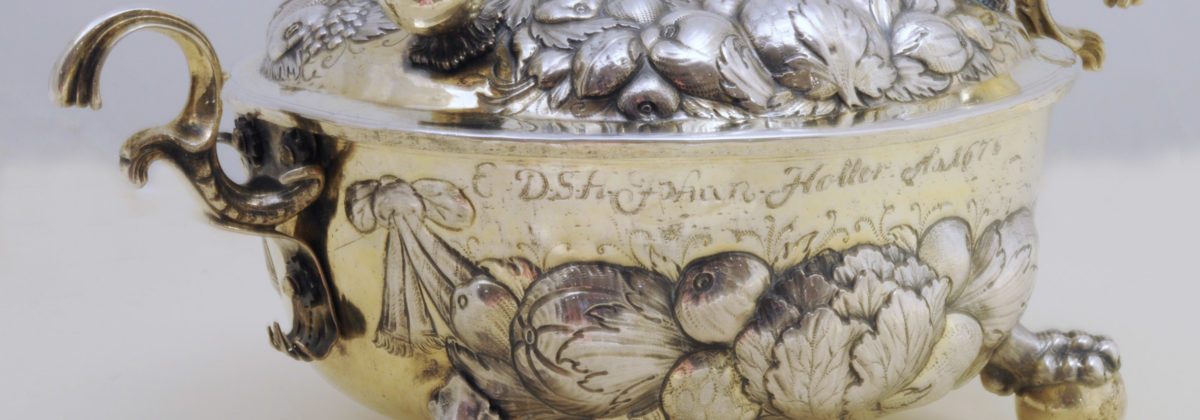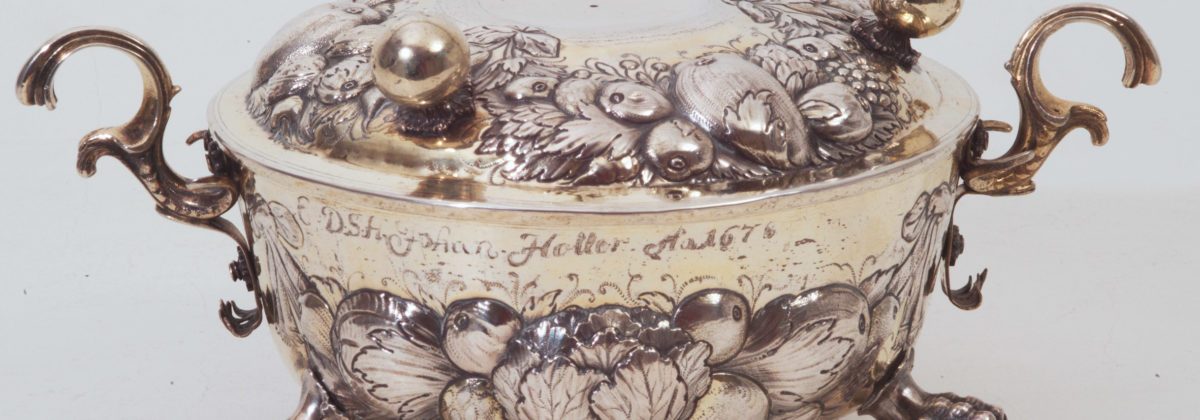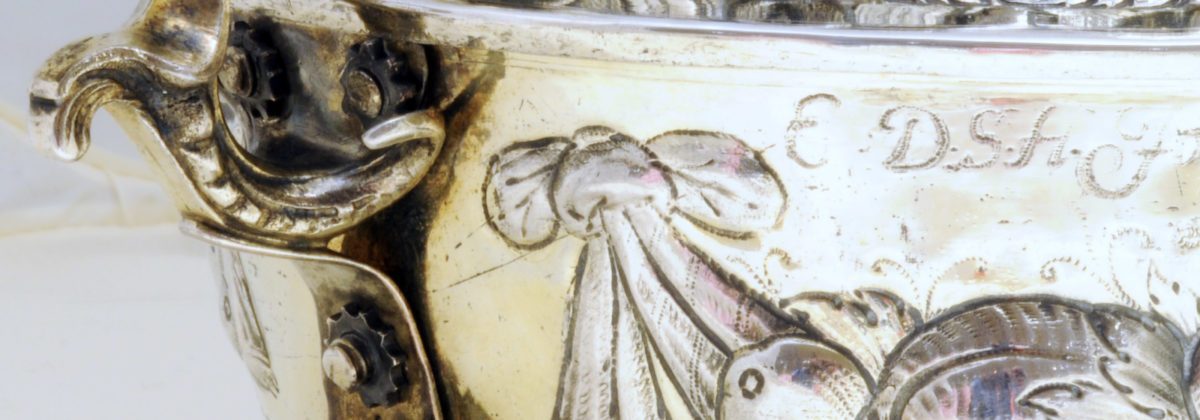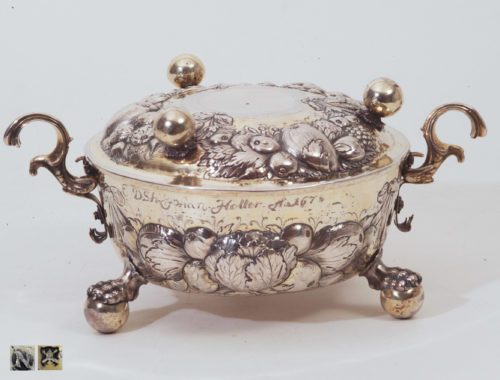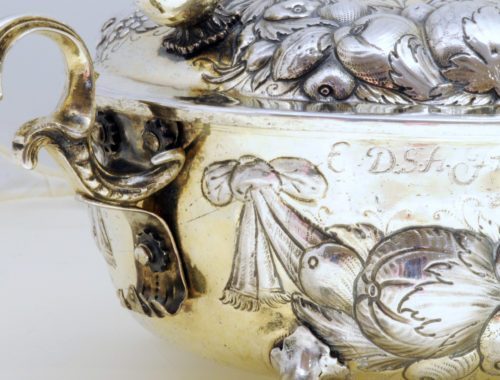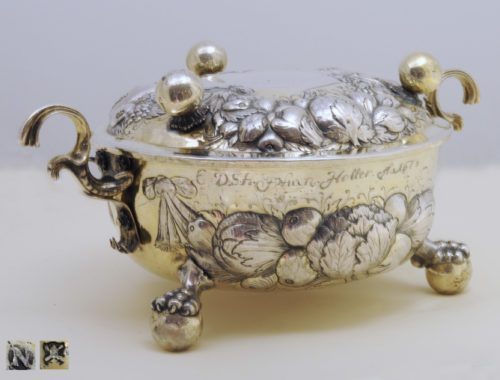Object Number: #358
Nürnberg c. 1676
Hans Nicolaus Müllner
City’s hallmark: “N” in round for Nuremberg, around 1676 (Rosenberg, Nr. 3761; Nürnberger Goldschmiedekunst 2007, Nr. 25)
Maker’s mark: a windmill in a shield as the mark of the maker Hans Nicolaus Müllner (Rosenberg Nr. 4258; Nürnberger Goldschmiedekunst, Nr. 599)
Point engraving: „E. DSH. Johan Haller. Ao 1678“
Height:14 cm (5,5 in.); Diam.: 28 cm (11,02 in.); Weight: 900 gr.
Detailed Information
German, Silver Parcel-Gilt Two-Handled Bowl and Cover
Round two-handled bowl on three claw-and-ball feet with counter formed C-clasps handles, flat arched lid with three ball feet. Embossed, chased and stippled decoration: at the wall garlands with fruit bouquets, on the cover surrounding fruit wreath.
On the wall in point engraving initials probably of the owner: “E. DSH Johan Haller Ao 1678”. Perhaps it is the initials of Johann Haller, diplomat and writer Johann (XII) Baron Haller von Haller Stein (1626-1697), descendant of the Nuremberg noble family Haller.
Silver Bowls as Puerperal Gifts in Europe
The present two-handled bowl, in German called “Wöchnerinnenschüssel“ has an historical and art historical as well as utilitarian and symbolic value. Vessels of similar form are to be found in iconographical and written sources since the Renaissance.
The name of this three-feet vessel was given after the porridge that women who have recently given birth (“Wöchnerin” in German) ate. Its name can be also connected to the godparent, who often offered this bowl as a gift on the birth of a child.
There could be often a finial on the cover, which could be a bird or a crown, in order to imply its origin as a marriage gift. An inscription, a date or a monogram – like the ones one can see on the present bowl – point even more to the event of a marriage. Under this aspect, one should see this kind of bowl as one with a symbolic value: the gift for the marriage signifies that one was awaiting something very particular from the bride, namely, the production of descendants.
Bowls for porridge for the child or the woman were made in wealthy families from metal. They had often a practical reason why they had two horizontal handles: in order to make it easy to hang the bowl on a bigger vessel and keep the porridge warm in a hot water bath (s. Spies 1978:19). The handle of this bowl is concave in order to be able to keep it, by passing a piece of wooden stick through it. Traditional forms of these vessels were made also of pewter or ceramic.
Maker
Hans Nicolaus Müllner became a master maker in 1644 and died in 1688. Important works of this maker are to be found in museums around the world and private collections. Müllner has besides further produced similar bowls, which are quite typical for him. An impressive tankard with lid from Müllner is to be seen in the Metropolitan Museum, New York. This shows the same claw-and-ball feet like the ones on the present bowl.
Literature
Nürnberger Goldschmiedekunst 2007.-Nürnberger Goldschmiedekunst 1541-1868: Bd. 1: Meister, Werke, Marken. T. 1 Textband – T. 2 Tafeln; Bd. 2: Goldglanz und Silberstrahl: Begleitband zur Ausstellung im Germanischen Nationalmuseum, Nürnberg, 20.09-2007-13.01.2008
Rosenberg, Marc, Der Goldschmiede Markzeichen, Bd. III: N-Z, Frankfurt a. Main: Frankfurter Verl.-Anst., 1925


